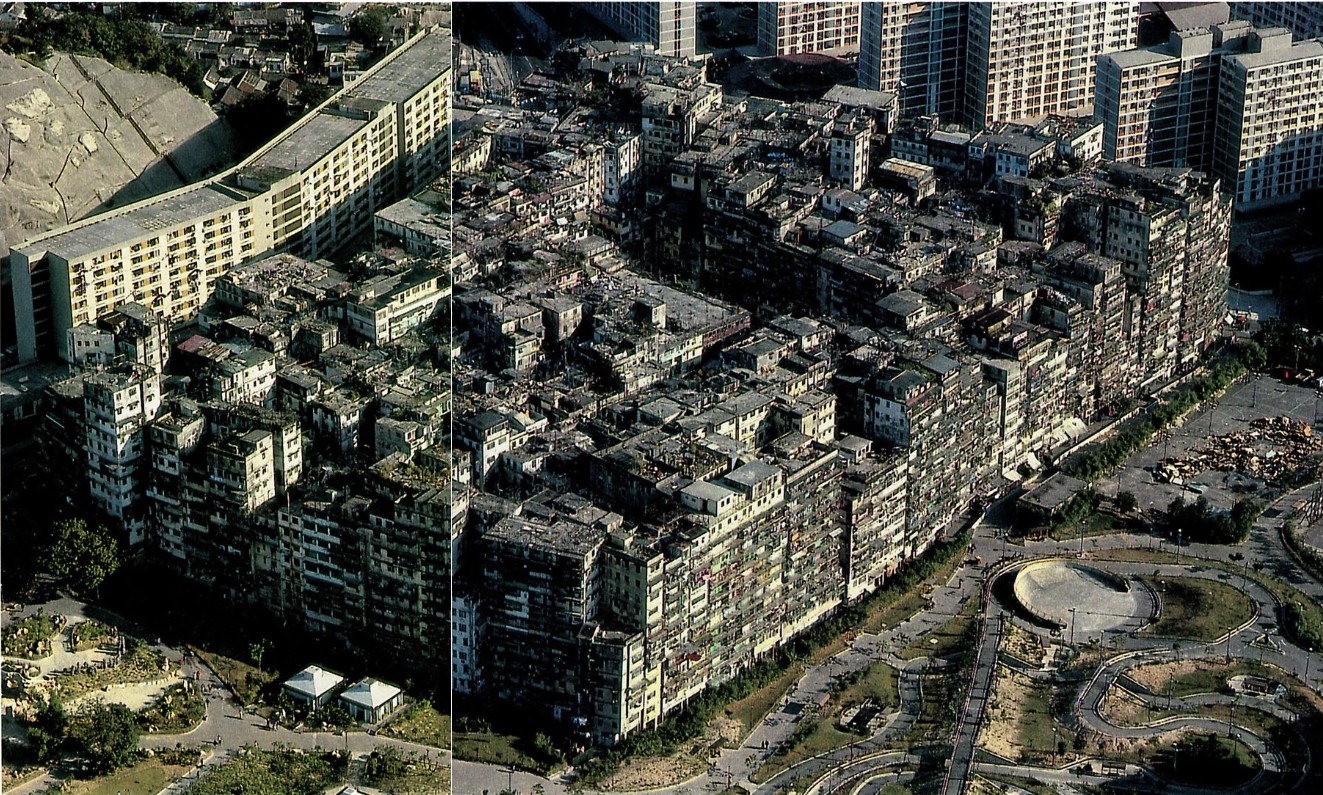│By Masaki Morisawa, Senior Product Manager│
In the February 1991 issue of the National Geographic there is an aerial photo of a strange architectural structure in Hong Kong. What at first glance seems like a giant post-apocalyptic fortress, on closer examination reveals itself to be a jumble of many small buildings crammed so close together that they seem to form a single mass.
This was Kowloon Walled City, an infamous slum district within colonial Hong Kong for nearly a century until it was torn down 30 years ago in 1994. Its haunting visual appearance, and the extreme density and anarchy of life within its compound continues to capture many people’s imagination today, as evidenced most recently in the huge success of an action movie set in the now legendary location.
A Contractual Matter
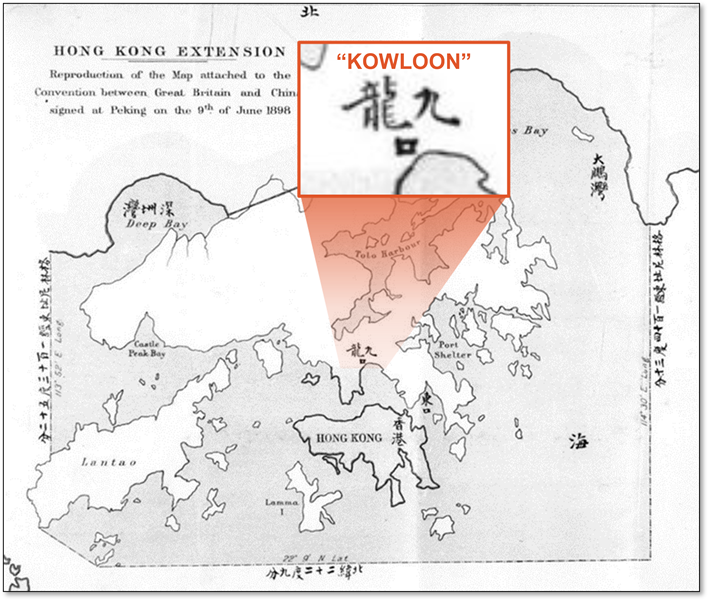
Various. Treaty. 1898. FO 17/1367. The National Archives (Kew, United Kingdom). China and the Modern World.
https://link.gale.com/apps/doc/HSKUTM300514301/CFER?u=asiademo&sid=bookmark-CFER&xid=85d2f06f&pg=129
Kowloon Walled City was an unintended byproduct of the Second Peking Convention in 1898 between Qing Dynasty China and Britain, which leased to the latter an expanse of land known as the “New Territories”. This new land expanded the colonial area by more than six times, but it came with two important provisions. First, the New Territories were leased, not ceded, and the length of the lease was 99 years. Second, the “city of Kowloon”, a small area containing a Chinese fortress surrounded by stone walls, was to remain under Chinese jurisdiction.
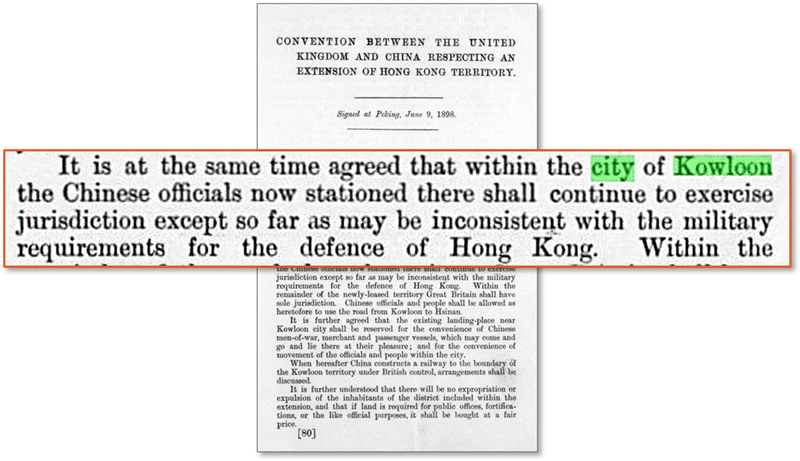
https://link.gale.com/apps/doc/HSKUTM300514301/CFER?u=asiademo&sid=bookmark-CFER&xid=85d2f06f&pg=130
Less than a year after the signing of the Convention, following a skirmish, the British forcibly removed all Chinese personnel stationed there, and in December 1899 unilaterally proclaimed Kowloon City a part of the colony. A triumphant Illustrated London News article boasted of “our most recent acquisition in the Celestial empire” and offered a rare glimpse inside the Walled City during this period.
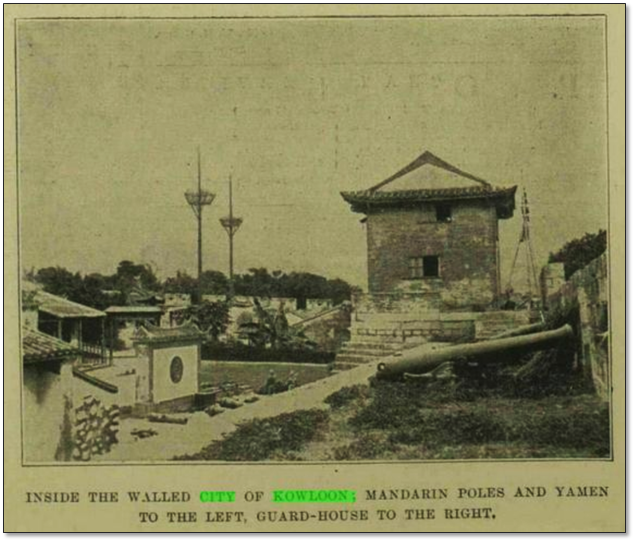
https://link.gale.com/apps/doc/HN3100472336/ILN?u=asiademo&sid=bookmark-ILN&xid=f576faf0
However, the problem was that China never recognized Britain’s one-sided proclamation. In the following years, like the hopping undead goeng-si from Hong Kong horror movies, Kowloon Walled City returned again and again from its supposed grave to haunt the British.
Twin Peaks in Term Frequency
A Term Frequency analysis on how frequently Kowloon Walled City appears in Gale Primary Sources documents shows two clear peaks in 1948 and 1963.
![Term Frequency analysis of search term [kowloon n5 "walled city"] from 1901 to 2000. Gale Primary Sources.](https://review.gale.com/wp-content/uploads/2024/07/09_TermFrequency.png)
I decided to do a Term Cluster analysis on the 1948 results to find out what was happening in that year, and found, words like “Forces”, “Army”, the term “Kowloon evictions”.
![Topic Finder analysis of search term [kowloon n5 "walled city"] for the year 1948. Gale Primary Sources.](https://review.gale.com/wp-content/uploads/2024/07/10_TopicFinder.png)
Apparently in this year, the Hong Kong government tried to forcefully evict many Chinese squatters who had come to the Walled City to escape the war-torn mainland.
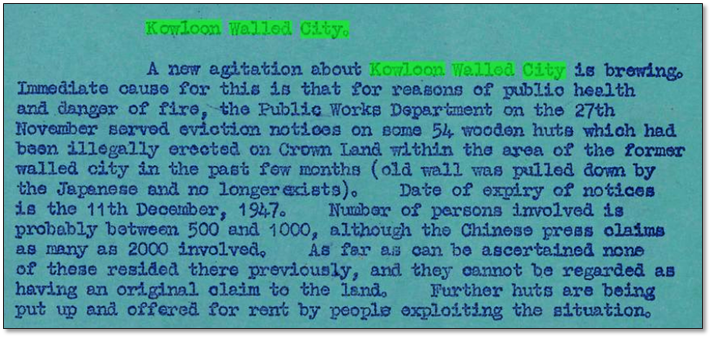
https://link.gale.com/apps/doc/HGAMIP469796780/SPOC?u=asiademo&sid=bookmark-SPOC&xid=838eb7d5
China’s Nationalist government seized upon the evictions as a propaganda opportunity to stoke up patriotic fire. By claiming the city as their own, they not only boosted their anti-colonialist credentials, but perhaps also managed to momentarily distract attention from their disappointing performance in the ongoing civil war against the Communists.
To the Chinese government, Kowloon Walled City had become a symbolic last stand against Western colonialism. Maintaining their sovereignty over the city became a matter of “saving face”, even though they no longer had control.
An Enclave Within an Enclave
The Walled City was an enclave within an enclave, as Hong Kong itself was a small capitalist territory within vast Communist China. While British Hong Kong thrived as its economic boom took off, the Walled City absorbed many mainland refugees escaping famine and political persecution. However, the Hong Kong people benefitted from its presence as they bought the cheap goods produced by the Walled City’s unprotected labour.
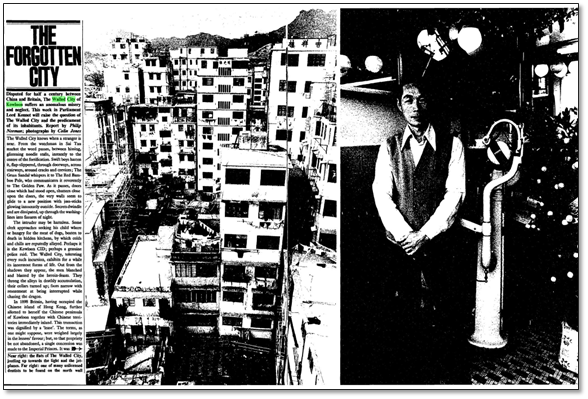
https://link.gale.com/apps/doc/FP1800597666/STHA?u=asiademo&sid=bookmark-STHA&xid=4b1d57fb
By the 1970s, the Walled City had grown so large within its confines that its over-height buildings were posing a safety hazard to aeroplanes from the nearby Kai Tak Airport (itself notorious as the world’s most terrifying airport due to its proximity to the city centre). The British conducted detailed surveys of the situation and produced an extensive report containing multiple annotated maps, charts, tables, a historical summary and a survey of current vested interests. However no decisive action was taken.
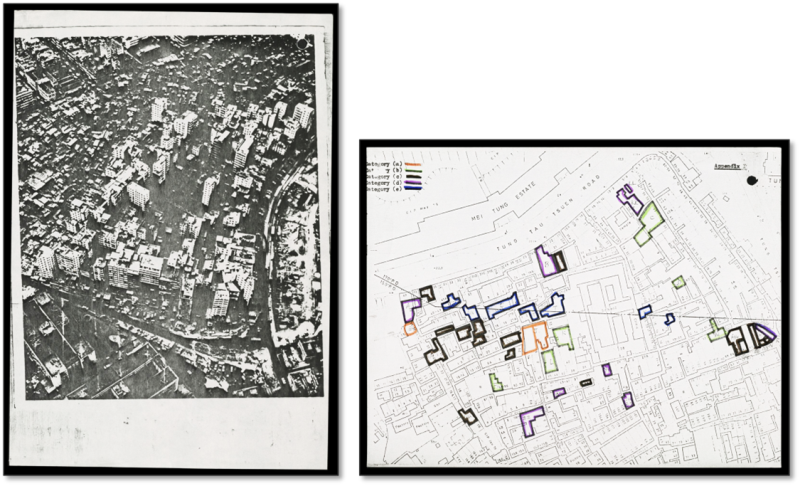
Kowloon Walled City and aircraft safety in Hong Kong. FCO 40/790. The National Archives (Kew, United Kingdom). China and the Modern World.
https://link.gale.com/apps/doc/WTDLVZ200172361/CFER?u=asiademo&sid=bookmark-CFER&xid=80900abc&pg=10
The End of the Walled City
Yet all of this was bound to come to an end. As the twentieth century drew to a close, the expiry date of the 99-year lease, 30th June 1997, loomed into the British consciousness. In the 1980’s, formal negotiations began between the British and Chinese regarding Hong Kong’s future. Following the Sino-British Joint Declaration of 1985, the British proposed to clear and redevelop the Walled City area, which the Chinese did not object to.
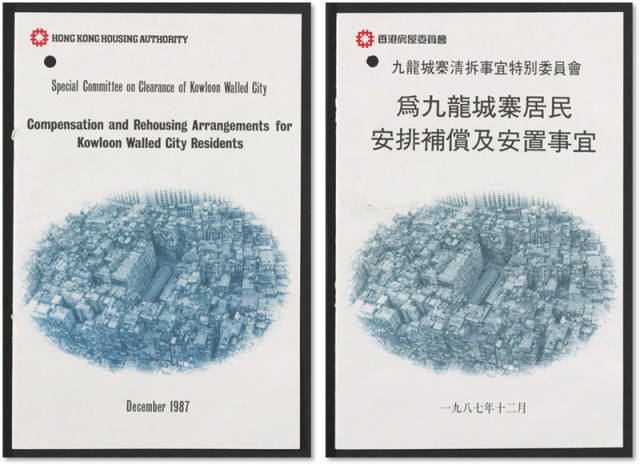
Future of Hong Kong: Kowloon Walled City. January-December 31, 1987. FCO 40/2253. The National Archives (Kew, United Kingdom). China and the Modern World.
https://link.gale.com/apps/doc/WQGJMF753797963/CFER?u=asiademo&sid=bookmark-CFER&xid=74a50d11&pg=4
A compensation scheme was drawn up for residents, and for those who continued to resist it, forced evictions began in 1991. Some of the residents fought until the very end because they believed the British did not have the right to remove them. Eventually, all former residents were forcefully removed, and demolitions began in 1993, ending in April 1994.
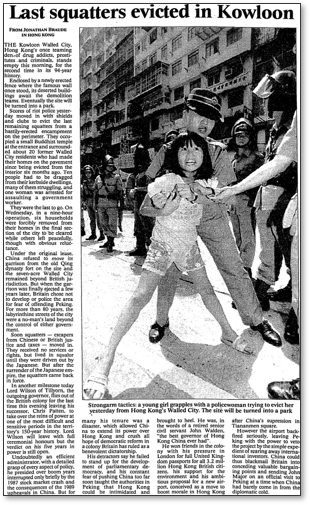
From City to Park
The following year the site was converted into a park, and visitors today can take a stroll in a scenic Chinese garden and view exhibits on the city’s past. The park serves as a memorial to the livelihoods of many nameless people who, although at the mercy of powers far greater than their own, made the most of their limited circumstances and boldly carried on with their lives—at Kowloon Walled City, a microcosm of Hong Kong itself.
If you enjoyed reading about Kowloon Walled City, check out these posts:
- Uncovering the History of Twentieth-Century Hong Kong, China and the World
- Decolonisation in the British Empire in Asia: The Malayan Emergency and Singapore
- The History of Extradition in Hong Kong
Blog post cover image citation:
Terrill, Ross, and Jodi Cobb. “Hong Kong–Countdown to 1997.” National Geographic Magazine, vol. 179, no. 2, Feb. 1991, pp. [103-104]+. National Geographic Virtual Library. https://link.gale.com/apps/doc/LRGIMV617729508/NGMA?u=webdemo&sid=bookmark-NGMA&xid=0306f5c4

